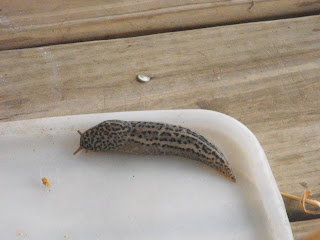 |
| A male cardinal |
The cardinal is a native bird in West Tennessee. The cardinal lives as far north as Ontario, Canada and as far south as Belize. Males can easily be identified by their bright red feathers. However, the female cardinal has light brown feathers.
 |
| A female cardinal |
Cardinals may have multiple laying periods, or
broods. Some cardinals have four broods during their mating season from April to August. Cardinals lay their eggs in small nests usually found in a tangle of vines or other shrubbery. The female lays three to four white eggs with brown speckles. After twelve days, the eggs hatch. Both the male and the female feed the babies for a few days. Then the male feeds the babies while the female builds a new nest for the next brood. After ten days, the babies leave the nest, but the male continues to feed the babies for ten more days.
Cardinals have various chirpy "songs." People used to trap cardinals and keep them as song birds, but they are now protected by law.
Cardinals are not picky eaters. They will eat most any seed, but they most enjoy sunflower seeds. They will also eat a few fruits, such as apple and raisins. If you want to attract cardinals, put a feeder about four feet above the ground and fill it with wild bird seed.
Fun Fact: The cardinal is the most popular state bird with seven states claiming it: Illinois, Indiana, Kentucky, North Carolina, Ohio, Virginia, and West Virginia
 |
| Female (left) and male (right) cardinals |
Enjoy!
C&T














